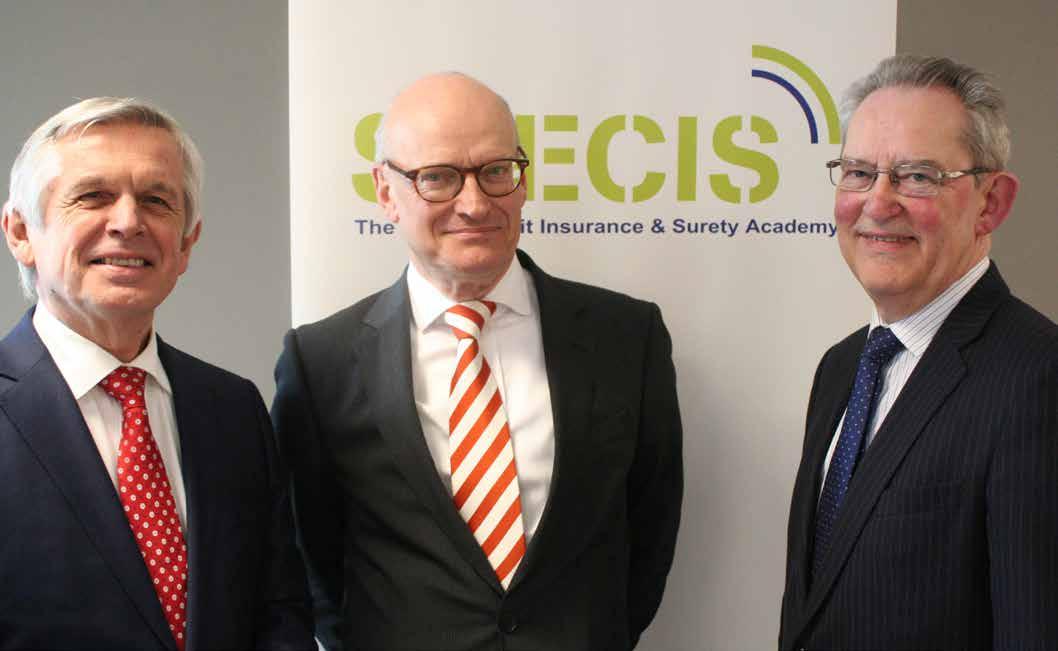
4 minute read
Interview New member BTG Pactual
Advertisement
Could you please elaborate which ICISA Committees are of interest? “Initially, we would like to participate in the Surety Committee, in order to share our experience of this product in the Brazilian market, and learn from the vast experience and expertise from other ICISA members in the international market. In the long run, and in line with our business growth and expansion, we would appreciate the opportunity to take part in other committees as a means to expand our understanding of other products and business lines.”
How can the present ICISA members benefit from the membership of BTG Pactual? “We hope to be active member of the association and are very keen to share our past experiences, as well as our company’s culture and approach to doing business.
BTG Pactual
BTG Pactual in the leading investment bank of Latin America, with more than 30 years of history since its founding. BTG is active in Investment Banking, Corporate Lending, Sales & Trading, Wealth Management and Asset Management, as well as in the Insurance business.
To find out more about BTG Pactual, please visit www.btgpactual.com As we expand our business, we look forward to the opportunity to share our views and perceptions of new markets and enhance discussions within the committees of ICISA with our opinions and analysis.”
What more would you like to share with the readers about your company? “BTG Pactual has been an innovative financial institution since its creation, 34 years ago. This disruptive DNA materializes in a number of ways, including the organization of the bank via the so-called meritocratic partnership, the main competitive differential, responsible for guaranteeing a consistent track record of growth in results and rigorous risk control. The partnership ensures clients the alignment of interests in the long term and ensures employees the possibility of forging a successful career, based on effort, talent and merit. The partnership model ensures that partners and employees have a high degree of commitment to the quality of the bank’s balance sheet, to the performance of the products offered to clients and to the results of the business areas.
BTG Pactual Resseguradora S.A. counts on two partners amongst its employees, guaranteeing our groups commitment to this business, as well as the alignment of our enterprises interests with our reinsurers / retrocedants.”
Article by Rajiv Biswas, Asia-Pacific Chief Economist, IHS Markit
China’s One Belt, One Road Initiative: The Economic Impact on Emerging Markets
Since Chinese President Xi Jinping first launched his vision for the One Belt One Road Initiative in 2013, China has gradually built up momentum for implementation of this grand economic development strategy. At a time when forces of nationalism and anti-globalisation have flourished in some parts of the world, China is pursuing an ambitious masterplan to build infrastructure connectivity that will accelerate economic development and strengthen international trade and investment flows across 65 nations spanning from Asia to the Middle East, Africa and Eastern Europe.
The scale of the total investment involved is already estimated to exceed USD 1 trillion in a vast array of infrastructure projects planned for the 65 participating nations. To date, over 40 nations have signed co-operation agreements with China for the Belt & Road Initiative including New Zealand, which became the first western nation to sign a Belt & Road co-operation agreement in March 2017.
As a milestone to mark the progress of the Belt & Road Initiative, China hosted the Belt and Road Forum for International Cooperation on 14–15 May in Beijing, with an estimated 29 heads of state having attended, including Russian president Vladimir Putin, Indonesian president Joko Widodo, Malaysian prime minister Najib Razak, and Philippine president Rodrigo Duterte. This reflected the geopolitical importance of China’s “One Belt, One Road” initiative for many of its regional neighbours.
A major development just prior to the commencement of the Belt and Road Forum was the announcement of a new US-China trade deal, including the decision by the US to send a delegation led by Matt Pottinger, Senior Director for East Asia for the US National Security Council to the Belt and Road Forum.
China’s Belt and Road Initiative is a grand strategy for building infrastructure connectivity among China and 64 other nations by high-speed railways, new highways, and modern seaports, with the potential to accelerate infrastructure development in many Asian developing countries, including those in ASEAN, Central Asia, and South Asia. However the infrastructure fi nancing provided under the Belt & Road Initiative is not limited to transport infrastructure, and financing has also been provided for other forms of key infrastructure such as power stations and industrial parks.
More than USD1 trillion of infrastructure projects are already planned under the umbrella of the Belt and Road initiative, including transport and power infrastructures and industrial parks. While some existing bilateral infrastructure projects that were agreed prior to the official launch of the Belt and Road initiative in 2013 have been rolled in under its umbrella, nevertheless the new bilateral infrastructure financing commitments that China has made since 2013 are very large.
The scope of China’s “One Belt, One Road” initiative now extends to 64 other countries, reflecting the strategic scale of China’s economic development vision, which extends across developing Asia, as well as to Africa, Europe, and the Middle East. China’s annual trade with the other 64 Belt and Road countries has already exceeded USD1 trillion. The breadth of China’s grand strategic vision is reflected in the composition of heads of state who attended the Belt and Road Forum






